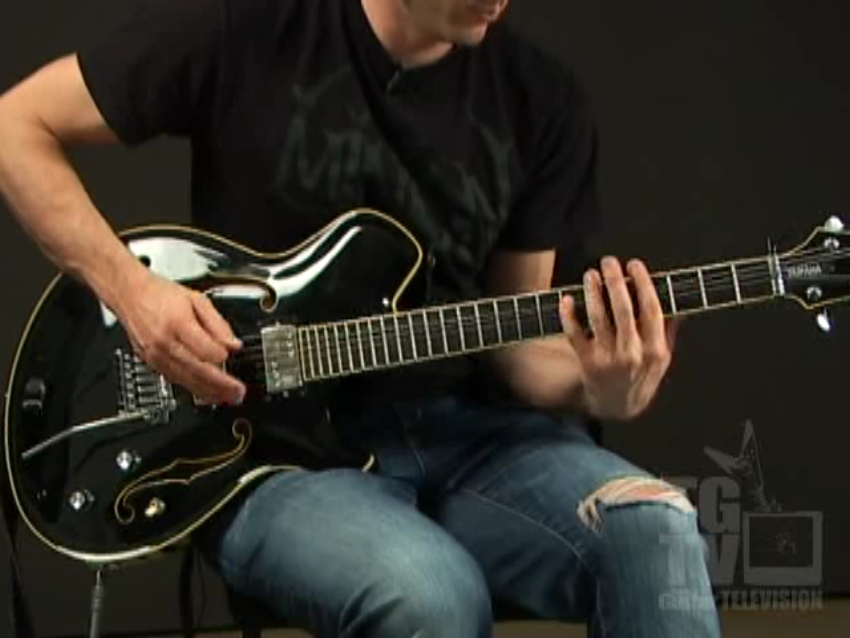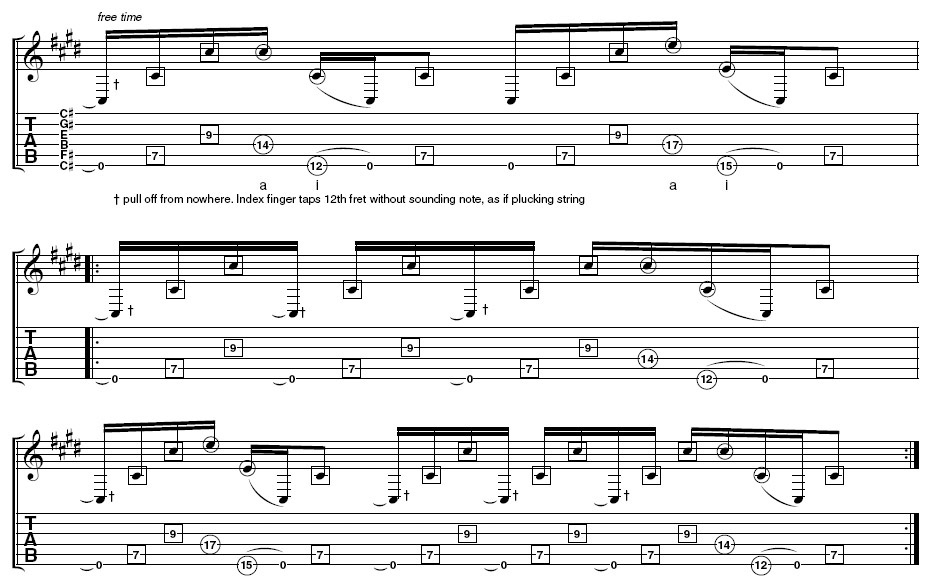Wes Borland on two-handed tapping

Wes Borland on two-handed tapping

Wes has explained that he's more into the rhythm side of playing guitar than just pure shredding, and that's where this tapping idea comes from.
The main drone note is a C spread across three different octaves, giving us a very wide intervallic sound (something you don't really associate with guitar). Your fret hand first and third finger shape is essentially mirrored by your pick hand. This can take some getting used to if you have always tapped with just one finger, as you will not only be using your ring (a) finger but you'll need a straighter hand shape.
Normally your tapping hand tends to face down the length of the fretboard, whereas here you will need to point more in the direction of the frets. Continuing Wes' rhythmic theme, take note of how he plucks the low C string. We've called this a 'tap from nowhere,' since it requires your index finger to quickly hit the low string and pull-off. If you do this right you shouldn't hear the tapped note, only the pull-off note. Fret hand taps need a lot of strength to sound good, so put in the effort for maximum results.
The co-ordination between your two hands can be difficult at first, so you may want to practise the octave shapes on their own. The pick hand shape in 12th position can be practised as an octave chord without splitting the two notes up. This will help strengthen the (a) finger and stop it from roaming onto the wrong frets.
Click here for full-sized tab.
Get the MusicRadar Newsletter
Want all the hottest music and gear news, reviews, deals, features and more, direct to your inbox? Sign up here.









